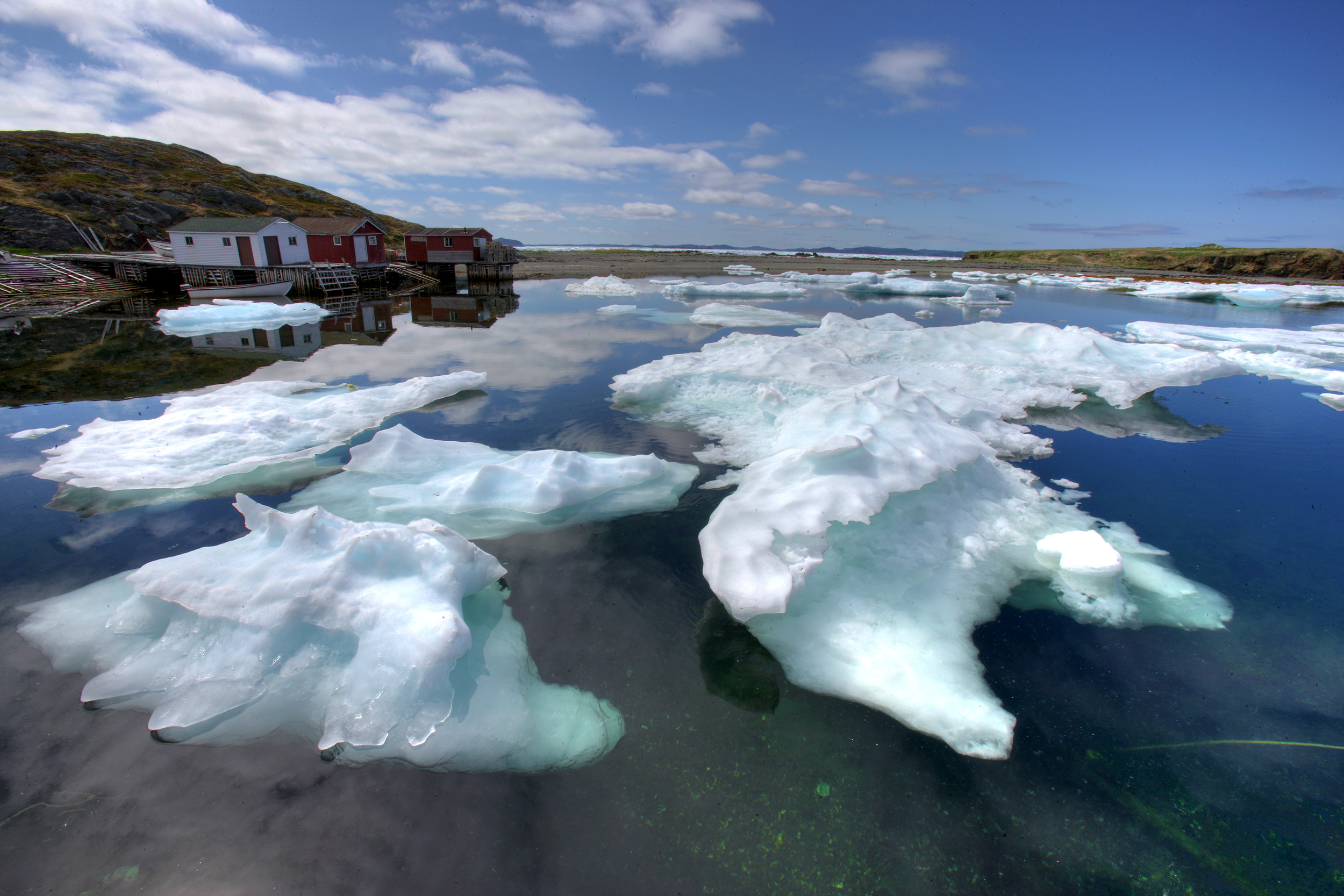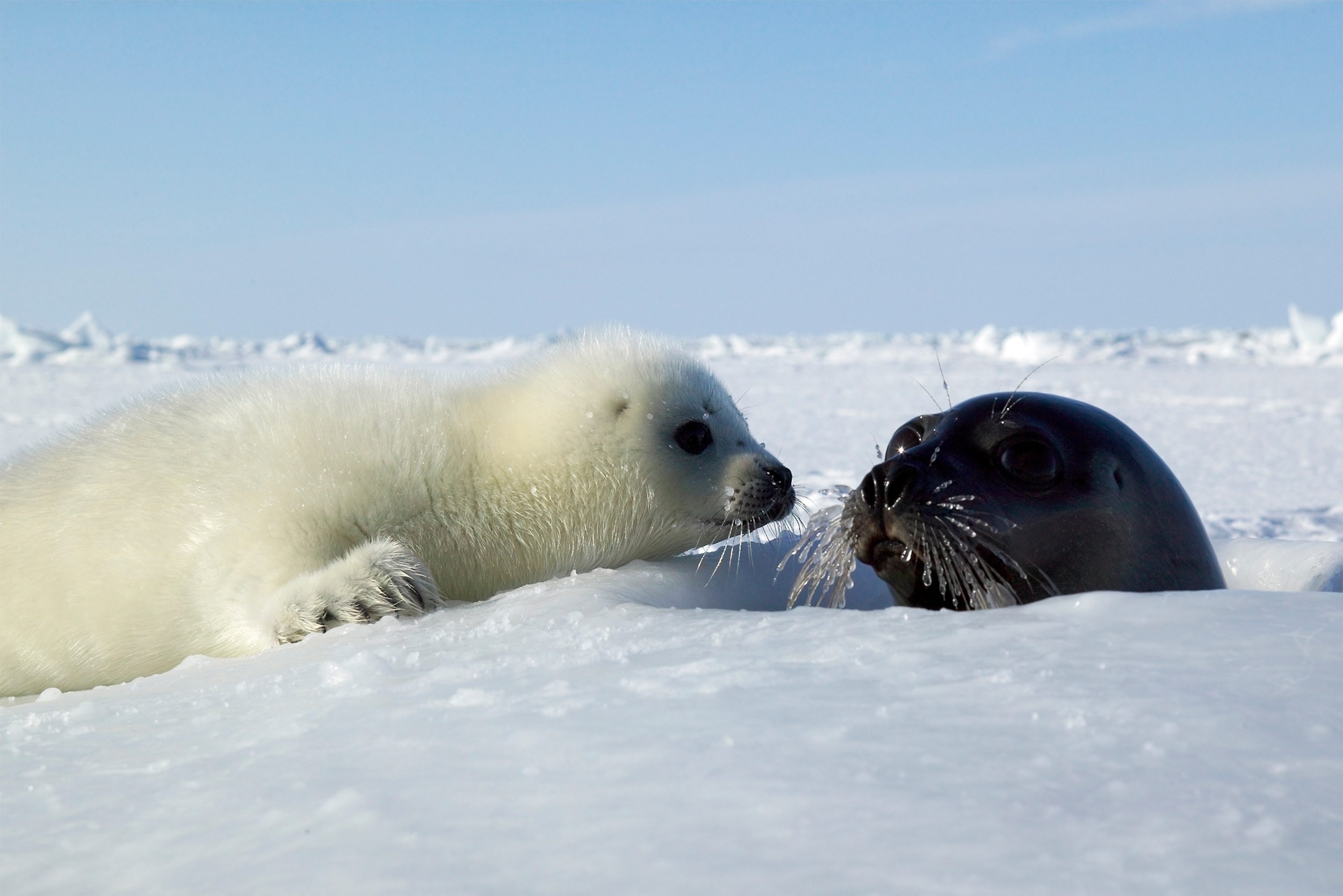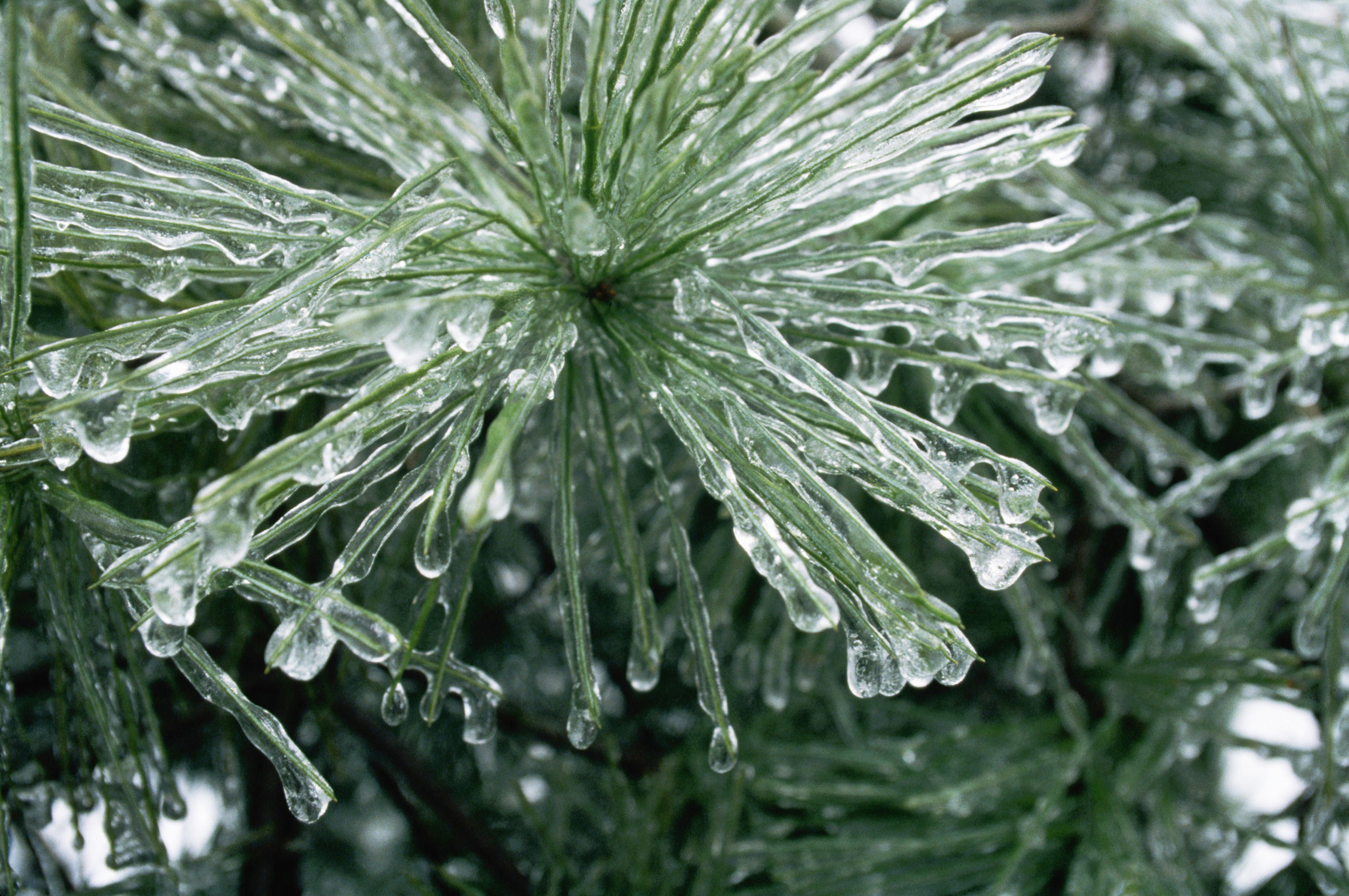The Unique Language of Newfoundland
Isolated in the North Atlantic, the people of Newfoundland and Labrador developed a subtle and beautiful lexicon to describe their environment.
Article body copy
It’s nearing the spring equinox, and Ryan Snoddon, meteorologist for the Canadian Broadcasting Corporation in Newfoundland and Labrador, calls for a change in the weather. “Let’s hope this is Sheila,” he says in an early morning webcast. He’s referencing St. Patrick’s wife who, according to local folklore, is responsible for administering the final brush of snow across the land before spring. It might be an overly optimistic forecast in this storm-battered corner of the North Atlantic, but Snoddon can be certain of one thing: his viewers will understand this piece of regional lingo. It’s one of thousands of terms employed only in Canada’s most easterly province, where language and landscape are deeply intertwined.
The cache of words used to describe Newfoundland and Labrador’s natural environment is as vast and wide as the province itself—geographic, atmospheric, vocational, poetic, and, like most of life lived along the coast, weather-dependent.
Known as “the Rock” for its jagged coastlines and impenetrable soil, the island of Newfoundland and its mainland counterpart, Labrador, was the first North American stop for an array of European peoples whose histories and vocabularies intertwined in this remote new world. Meanwhile the indigenous people—Inuit and Innu in Labrador, Mi’kmaq in west and central Newfoundland—had their own rich languages from which the newcomers occasionally borrowed. Missing, however, were the words of the Beothuk, the indigenous people of the island who were wiped out, along with their language, by the early 19th century. Scraps of their vocabulary were transcribed by the settlers (albeit poorly), but none of their words were adopted into spoken English.
The origins of European settlement began with the arrival of explorer John Cabot, who reached the island of Newfoundland in 1497 and claimed it for England. Cabot returned to Europe with astonishing tales about the abundance of cod. The waters were so thick with fish, the mythology goes, that you could walk across their backs to reach the shore. Drawn by the aquatic bounty, the Basques, French, Spanish, Portuguese, Irish, and West Country English followed, fishing the waters that surrounded the island and Labrador. What were initially seasonal fishing stations, grew to permanent communities—called outports—by the late 18th century. The tiny settlements ringed the shoreline and were connected only by the sea. (It wasn’t until 1949 that the region got its first major highway when Newfoundland and Labrador, then still part of the British dominion, joined Canada.)

With communities so tied to the sea, it is not surprising that ice in all its variations is given precise, descriptive names. Slob ice, for instance, is a mass of ice or snow in seawater. Photo by Robert Postma/First Light/Corbis
Language bloomed in this isolation, inspired by the wild and unfamiliar environment and influenced by Old World cultures. Words arrived from everywhere. Spanish fishermen brought bacalao, their name for cod. Dwy, to describe a short, sudden storm was imported from West Country English. A local trickster was called a sleveen, adopted from Irish. The newcomers picked up on terms already tied to place, like tabanask, an anglicized Innu language term for toboggan and the Mi’kmaq word, babbish, referring to the stretched animal hide used in the crisscrossed base of snowshoes, as well as sina, the word the Inuit use to describe the edge of a floating ice field.
But sina wasn’t enough—there were so many types of ice and snow in the coastal waters where the early fishermen hauled in their catch. Naming these unfamiliar formations—the soft ice close to shore (lolly), or a mass of ice and snow in seawater (slob)—was paramount to survival.
Because of this, language was often occupational and rooted in the culture of the fishery. Hence the plethora of terms used to describe every stage of seal development, from white-coat (baby) to ragged-jacket (immature) and bedlam (middle-aged) to dotard (old).
For a weather forecaster like Snoddon, language is similarly important and tied to vocation. Along with Sheila’s Brush, he regularly peppers his weather reports with local terms. Overcast, damp, and foggy days are mauzy, and he constantly calls for RDF (the regional acronym used for rain, drizzle, and fog). So far he hasn’t managed to use glitter—the term for freezing rain that accretes as ice on branches and wires—or fairy squall, a sudden gust of wind that seems to come from nowhere, as if conjured by supernatural forces. As a transplant from Ontario, Snoddon is careful to learn the words first so he can integrate them in a way that seems natural.

It’s a “mauzy day” at Newfoundland’s Mistaken Point Ecological Reserve. Photo by Cameron Davidson/Corbis
“You kind of want to almost get your street cred before you try and use those kinds of words,” says Snoddon. “You don’t want to make it just seem that you’re saying them for the sake of saying them.”
Why Newfoundland and Labrador has its own lexicon, and why so many of the province’s words relate to the coastal environment is both obvious and complex says folklorist Philip Hiscock of Memorial University.
The farther people were from the authoritative culture of St. John’s, the province’s capital, but also of Britain and Canada, the less it mattered, so there is a grammar of place at play in the regional dialect. “The words that are important to you are the ones that reflect right here and now,” says Hiscock. “So they’re going to vary, they’re going to change, and they’re going to be imbued with a sense of locality.”
Hiscock says that Newfoundlanders and Labradorians have a love of language, in particular local language, and this has contributed to what he calls the “aesthetic” or “poetic value” of their vocabulary. He cites the word silver thaw, which, like glitter, is used to describe the ice that forms on trees when rain falls near the freezing mark.
Another factor in the development of their distinct dialect is Newfoundland and Labrador’s strong oral tradition. These stories were often born of hardship, adversity, and perseverance in the face of poverty with plot points that reflected a lingering feudal system that saw rural fishing families beholden to the capricious elements and merchants in larger centers. These narratives were inspired by a world that was both harsh and beautiful, good and bad—the dichotomy at the heart of all great tales. Stories, like songs, are told with cadence and tone, timing, and, most importantly, attention to language. Perhaps there simply weren’t enough words to describe the erratic weather and rock-lashed land, the complex history of the people who settled there, and the boundless sea that surrounded them. Maybe the regional lexicon was not simply the result of limitation—the isolation of the outports—but a response to the limitlessness of the natural and social landscape.
The vocabulary is fluid. It’s an ongoing dialogue, and it’s as captivating and elusive as the Newfoundland fairies. Preservation efforts are constantly underway, from the b’ys (read: dudes) on George Street outdoing one another with local slang to the academics who collect and study this kind of talk like specimens in a jar. But it’s the artists who’ve cornered the market on heritage language in the province.

The lexicon in Newfoundland and Labrador includes four different names for seals, from young white-coats to older dotards. Photo by Rolf Hicker/All Canada Photos/Corbis
Marlene Creates, for example, captures the language of the natural world in her poetry and visual art, which are equal parts aesthetic and political. And what wordsmith could resist terms like glim, a light seen across a distant ice field, or swatch, a rivulet of open water in ice? There is an onomatopoeic quality to these words that lends itself to lyrical language: sketch, for the thin layer of ice that rests on the water; sish, both the word that describes a boat running through slushy water and the resulting sound. You can hear the crackle in brickle ice, which is easily shattered. Way ice is more straightforward, in that a vessel can navigate its broken pans.
These are some of the terms featured in Creates’s recently published book, Brickle, Nish, and Knobbly: A Newfoundland Treasury of Terms for Ice and Snow. Creates, whose work is in collections across the country, including the National Gallery of Canada, has been working in what she calls “landscape literacy” for three decades. It’s a mix of performance art, poetry, and photography, with landscape and language as the connecting threads. “What goes unnamed largely goes unseen,” says Creates. “Knowing the terms helps us actually see different phenomena, instead of winter being just a cold, white blur.”
For her most recent project, Creates made an inventory of snow and ice words, and then photographed real world illustrations in Conception Bay and Blast Hole Pond near where she lives. Like artifacts in a museum, she preserves these words and displays them for future generations.
Logophiles like Creates have been cataloguing Newfoundland and Labrador’s words for centuries, but the best known and most prolific collection is The Dictionary of Newfoundland English (DNE).
A joint venture of scholars W. J. Kirwin, G. M. Story, and J. D. A. Widdowson, based out of Memorial University of Newfoundland, it was published in the early 1980s after more than two decades of research.
The dictionary defines each word and includes spelling variants, but also offers insight into the culture, culling from both oral and written sources and including snippets of these texts as illustrations of how the terms might be used. It allows the reader to envision the words in situ as they might exist in a casual conversation.
This is helpful for the layperson as many of the words in the DNE are no longer in popular use, and others are regional, so specific that common terms in one bay are unheard of in the next. Along the southern coast of Labrador a floater is a migratory fisherman. He could also be called a roomer, as he sets up a seasonal fishing room to work from. But a room might also be referred to as a station, and thus the roomer or floater might also be a stationer.
Words like roomer, floater, and stationer largely disappeared from the vocabulary as technology progressed and the economy changed. When the fishery moved from an inshore family-based industry to commercial fleets, there were no longer beachmasters (the person responsible for curing and drying fish) or dressers (the person who removes the backbone, head, and guts of the fish). The enormous trawlers didn’t use the small knot of boulders fastened with twigs—called a killick—that had anchored the smaller punts. Overfishing by these outsized vessels led the Canadian government to impose a moratorium on cod fishing in 1992. It was a cultural loss as much as an economic hit and language was just one of the many casualties.
Meanwhile, climate change may increase the occurrence of ice storms in the province, so words like silver thaw and glitter could enjoy a resurgence, or at least retain their rank in the regional vernacular.

Doesn’t silver thaw on a pine needle sound much nicer than frozen ice? Photo by Carl & Ann Purcell/Corbis
When the DNE editors first began compiling the dictionary in the 1950s, they saw joining confederation with Canada as one of the main threats to Newfoundland and Labrador’s unique lexicon. Then-premier Joey Smallwood famously said he would drag Newfoundland kicking and screaming into the 20th century, suggesting that the region was heavily rooted in the past. So, a secondary menace were people who felt regional words were outdated, marking Newfoundlanders as inferior, and thus not worthy of preservation. The distasteful “Newfie” jokes that mimicked the island’s dialect and depicted inhabitants as hapless goofs are, thankfully, dying out in the rest of Canada where they were once popular. (Case in point: What’s black and blue and floats in the harbor? The last mainlander who told a Newfie joke.)
The aim of the dictionary was to create a word storehouse from which scholars, but perhaps more importantly, Newfoundlanders from all backgrounds could draw.
The resulting dictionary largely achieved its goals, as even more than an academic resource writers, artists, and musicians also find inspiration in its pages. And so does the general public; the DNE often finds a place of reverence on living room coffee tables from Muddy Hole to Joe Batt’s Arm. It’s been reprinted 17 times since it was first published in 1982, and the second edition alone sold 10,000 copies.
Across the province, speakers are repurposing the language as a way of asserting their roots. Along with his uniform, a tour guide might slip on an Irish-sounding brogue and sprinkle his speech with Newfoundlandese while performing for tourists, or it might be a routine adopted among peers, proving your insider status by using words like touton (a traditional food of deep-fried bread with syrup) or calling mosquitos “nippers.” It’s a linguistic secret handshake that’s often accompanied by putting on a thick regional accent. If you say it in the right situation, you’re kind of underscoring your difference from others and your pride in your competence in this alternate culture, explains Hiscock.
It’s a small-scale language revival. Some words will persist in this way and others will remain a historical mark, an entry in the 770-page dictionary. And, as in the case of the Beothuk, some are lost entirely. We will never know what words for ice, mountains, storms, flora and fauna, and more disappeared with this culture.
“You can’t really save a language, but you can renovate it in certain ways,” Hiscock says. “It’s a little like tearing down an old building and saving the wood and the windows so that other people can put it to use in their places.”
As the fishery continues to decline and some of the language goes with it, words are being used in new ways. They appear in visual art, music, and literature; in the names of businesses, restaurants, and cultural ventures across the province; and, of course, in the daily weather forecast.
There’s one word that Snoddon admires above all others, and hopes to incorporate into his newscasts: screecher. It’s used to describe a howling wind or storm. “I’ve been thinking, could I pull it off?” Snoddon asks, then he dons his newscaster voice and tries it out: “There’s a real screecher of a wind out there today.” He’s silent for a beat. “I wonder, how many people would really know what I was talking about?”
When storm season approaches in the North Atlantic, Snoddon will have plenty of occasions to try it out. Maybe he’ll be responsible for bringing screecher back into the local lexicon, putting his own twist on the word, claiming it, and just as he does this, also setting it free.

